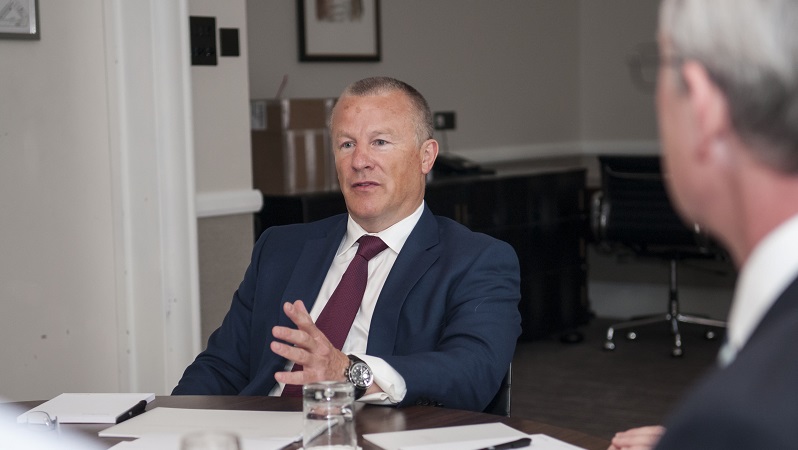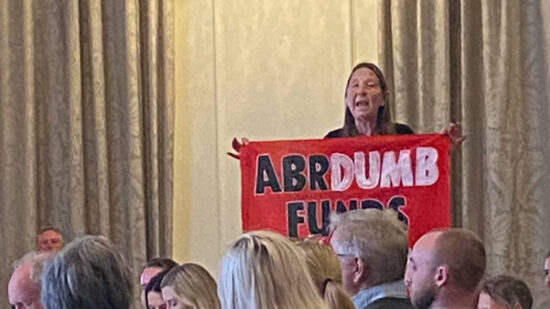The latest annual report for Neil Woodford’s former fund contained few pieces of good news for stranded investors. In the year just gone, authorised corporate director Link failed to sell any of fund’s eight remaining assets.
Investors have received £2.54bn of their cash back so far, yet this sum could have been much higher if not for its unquoteds suffering heavy write-downs. Link has also been criticised for offloading certain assets at a cut price, only for them to later shoot up in value.
When it was originally suspended in June 2019, Woodford’s fund, now called LF Equity Income, was worth £3.5bn. By the time Link issued the first capital distribution in January 2020, the fund’s value had fallen to £2.9bn. After the fourth payout in December 2020, its net asset value was at £192.6m but by February 2022 this had fallen to £140.9m, despite no additional disposals being made.
Though LF Equity Income enjoyed a £19.6m bump to NAV in April thanks to an uplift in valuation for Benevolent AI, the relief for beleaguered investors was short lived, as one of its largest holdings, Rutherford Health, went belly up. Its stake in the Hereford firm, known for its high energy proton beam cancer treatments, was written down to nil, resulting in a £24m hit.
Over the years, Link had continued to pump money into the cash-strapped business. Alongside other investors, it stumped up another £750k to help Rutherford secure longer term funding, a gesture which ultimately proved futile.
Annual reports for LF Equity Income show Rutherford Health was once one of its most highly valued holdings, with its 57 million shares commanding a £76.3m price tag. A year later it was worth less than half that at £37.1m.
Another holding written down to nil
Other hard-to-trade private assets in the fund have suffered a similar fate. Its holding in Origin, a US biotech company specialising in nitric oxide treatments for wounds, halved from £2.7m in 2020 to £1.8m in 2021, despite Link loading up on more preference shares that year. At the end of March 2022, this was written down to nil.
Link told Portfolio Adviser that Origin has not collapsed into administration, and the write-down was a result of the “regular revaluing of assets”.
Even Benevolent AI, one of the fund’s relative success stories, has seen its valuation slide. LF Equity Income’s 237 million shares were revalued upwards at £47.8m after it listed on the Euronext, but had been worth £64.3m in March 2020.
See also: Woodford pulls the plug on UK comeback venture
Small gains overshadowed by missed windfalls
Not all of Woodford’s leftovers have had this experience, though. In the latest annual report, Link said it was “excited about the progress” of Atom Bank and Nexeon. The latter, which makes silicon materials for batteries, has been marked up 1,320% since March 2020.
At the end of the latest reporting period, its 168,000 shares were worth £128.60 a piece or a total of £21.6m. However, Link was able to offload circa 30,000 shares at a higher price of $163 (£133.22) per share in July, netting $4.8m (£4m). Assuming it can sell the rest of its Nexeon shares at the same price, it could make around £816k profit.
However, this pales in comparison to some of the spectacular gains trapped investors could have received if Link had held onto certain ex-Woodford holdings longer.
LF Equity Income shareholders missed out on a £300m windfall from Oxford Nanopore, which listed on the London Stock Exchange at £5bn a little over a year after Link sold the fund’s 6% stake to Acacia Research for a mere £20.7m. Schroder UK Public Private, formerly Woodford’s Patient Capital Trust, bagged £11m after selling a part of its stake at IPO.
Kymab, another former holding, was sold for £4.5m only to see its valuation skyrocket after French pharmaceuticals giant Sanofi agreed to buy it for $1.5bn (£1.1bn).
Question mark over Mafic
With recession looming and interest rates drifting upward as central banks look to curb inflation, it is a precarious time for private companies, especially those requiring frequent handouts from investors.
One such holding in Woodford’s former fund is Mafic. Since April 2020, Link has poured £1.5m into the loss-making US basalt fibre manufacturer.
It is not known how deep in the hole the Luxembourg-registered company is.
According to a blog post from Leigh Day, which has teamed up with Harcus Parker to take Link to court over the Woodford scandal, Mafic revealed a $7m (£5m) loss in its accounts for 2017. Its auditor Grant Thornton refused to sign off its accounts from 2014-2017, stating there was insufficient data to verify the company’s assets.
Its valuation has fluctuated wildly over the years, with the fund’s 4 million preference A shares dropping from £19.5m in the 2019 report to £9.6m in the 2020 report. In the most recent set of accounts its total investment was worth just £1.1m.
In LF Equity Income’s latest annual report, Link said the company continues to seek either longer term funding or a sale to an interested party but admitted “its future is far from certain”.
‘Crossrail 2 is likely to be designed and built before all this is finished’
While some of the remaining holdings are in hot areas of the market, such as Nexeon in the battery space, the venture capital market is cooling.
Listed growth stocks have plummeted this year, but private company valuations have been slower to catch up. However, analysts warn that could change heading into the second half of the year, resulting in big hits to NAV for the likes of Scottish Mortgage.
In its review of the fund, Link admitted the longer-term economic impact from the Covid-19 outbreak and, more recently, the war on Ukraine have not yet been fully realised.
“It must be recognised that markets will remain fragile for a period of time and it is reasonably foreseeable that periods of instability, and consequently asset pricing, will emerge in the coming months.
However, the ACD still maintains it will be able to sell the “key remaining assets” by the end of 2022, despite admitting the wind-up could push into 2023.
But others are not so confident. “If Link and all its advisers could not sell the remaining companies into the greatest bull market ever for venture capital, then I am afraid the outlook is bleak for investors,” says Peter Sleep, senior portfolio manager at Seven Investment Management.
“I assume there are buyers in the pipeline for the remaining rump of firms, but at what price compared to the valuations when the funds were suspended?”
“Unfortunately, winding up the fund is not the end of the affair,” he continues. “We have the FCA report to come, maybe Treasury Select Committee hearings and at least one case pending in court. Crossrail 2 is likely to be designed, built and finished before all this is finalised.”







